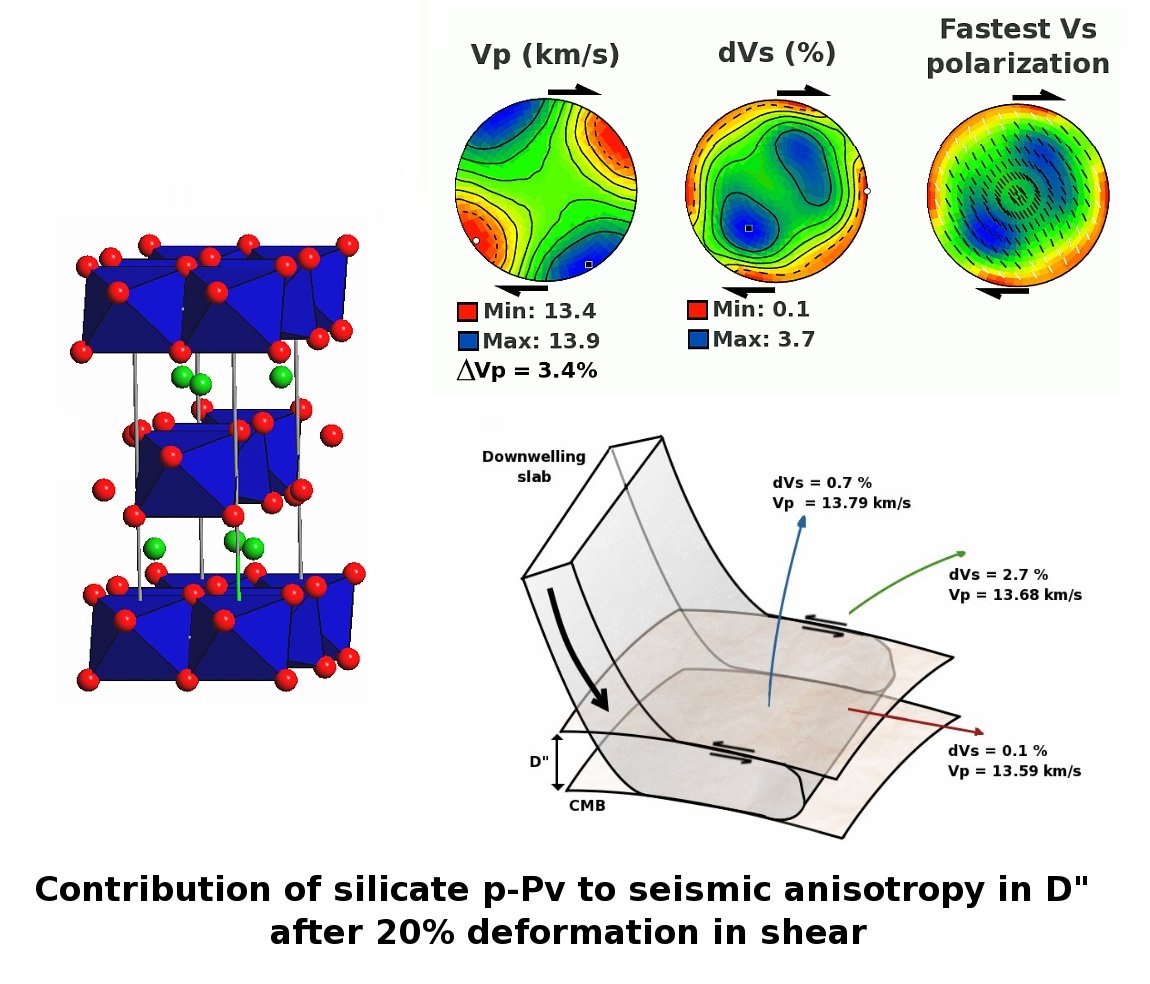
Under the pressures of the core-mantle boundary (2900km below the surface), the main constituent of the deep mantle, silicate perovskite, undergoes a phase transition to a post-perovskite phase whose mechanical properties remain unknown. Merkel's team monitored the development lattice preferred orientations in an analogue of silicate post-perovskite plastically deformed above 100 GPa (one megabar). The experiments were carried out inside a diamond anvil pressure cell and the measurements performed using x-ray diffraction at the HPCAT sector of the Advanced Photon Source. From those measurements, they discovered that (100) and (110) slip dominate the plastic deformation of post-perovskite.
The core-mantle boundary is a critical region for the Earth's dynamics and seismologists have long documented anisotropy at those depths. Seismic anisotropy is the expression of deformation and dynamics and, thanks to the measurements of Merkel's team, it can now be interpreted. Moreover, the application of this experimental technique is not limited to geophysics and it can now be extended to improve our understanding of the plastic behavior of a whole array of materials under extreme conditions of pressure, stress, and temperature.
